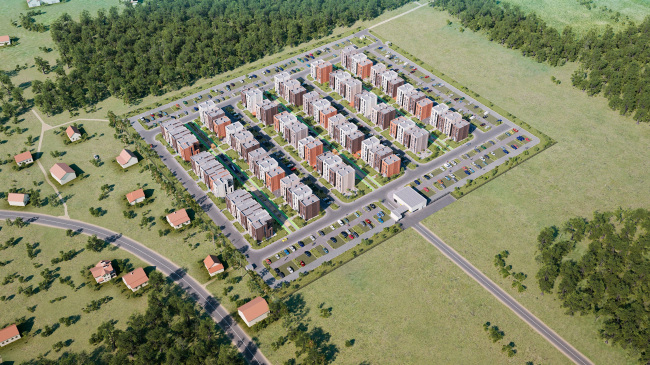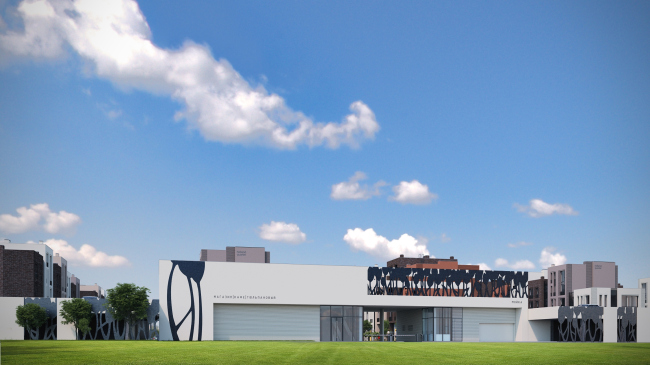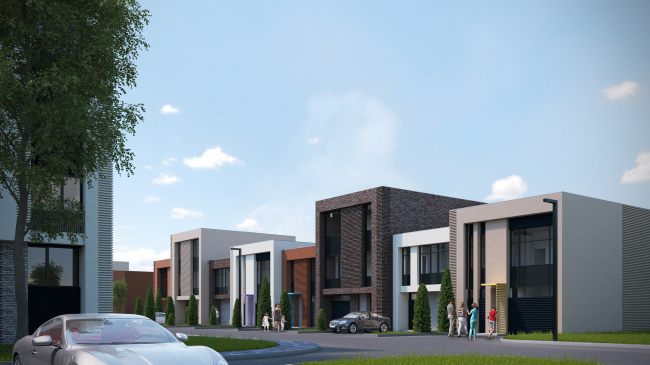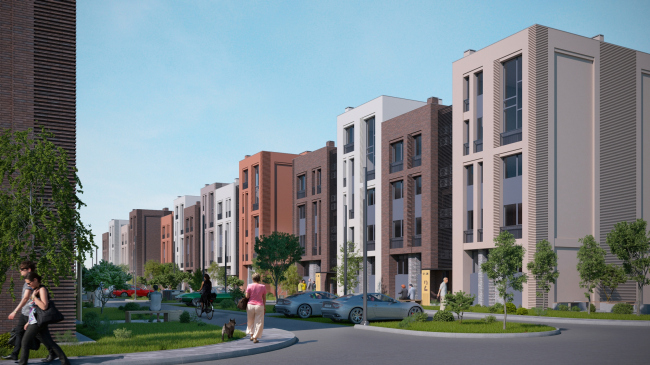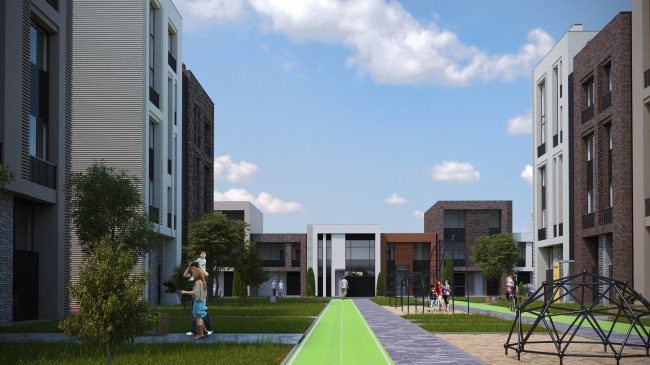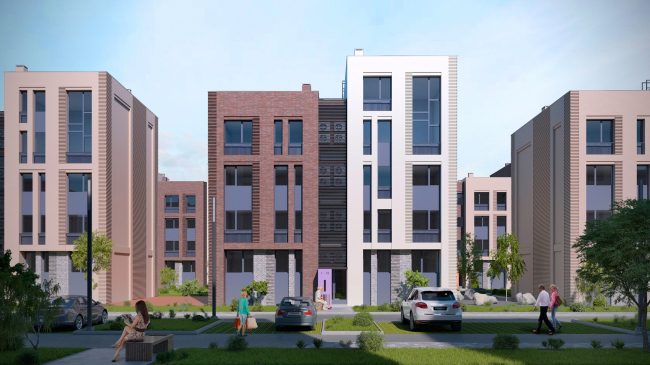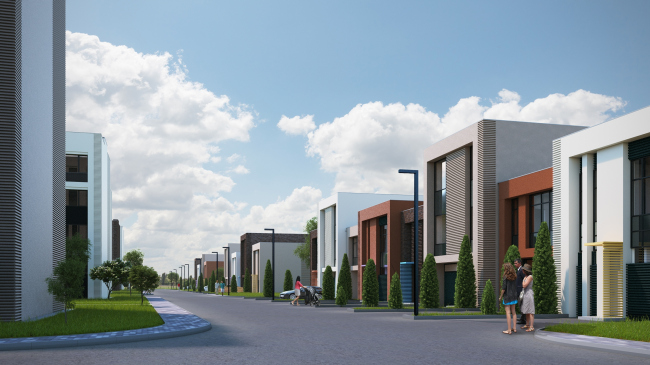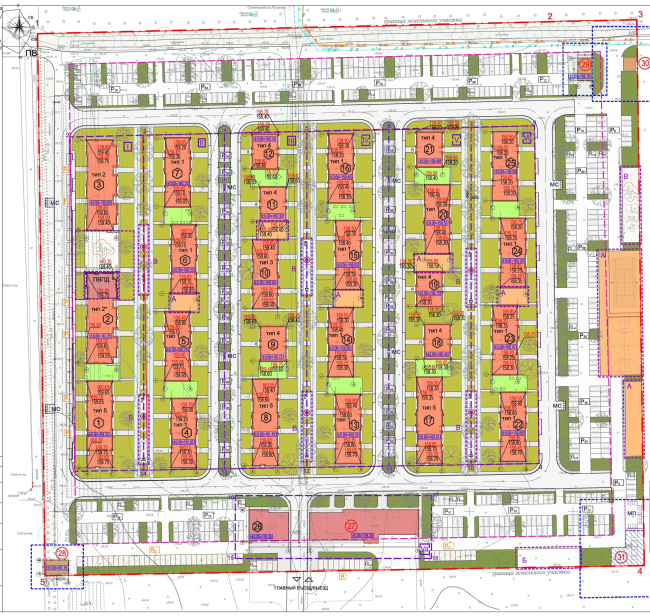|
Published on Archi.ru (https://archi.ru) |
|
| 02.12.2013 | |
|
Variety Line |
|
|
Anna Martovitskaya |
|
| Architect: | |
| Yuliy Borisov | |
| Studio: | |
| UNK | |
|
UNK project bureau is bringing to life a plan of a multiformat apartment block in Ivanteevka, The Dutch Quarter.  The investor of the new residential area in Ivanteevka made a number of stipulations on ordering the project: the development was to be a low rise compact residential with an expressive outward appearance despite the low final cost. At the same time the housing was supposed to be built practically in the middle of nowhere: the site borders on a pine forest, in the part of Ivanteevka that is only nominally a city. Up till now only private houses were built on the picturesque landscape. The UNK project was to note another important condition: the complex that is now being designed as an isolated settlement is likely to become a part of a larger scale district in the coming future. “Our client set us a task to develop such a project that can be multiplied – explains Julius Borisov. – That is why we tried to make it in a certain way universal”. 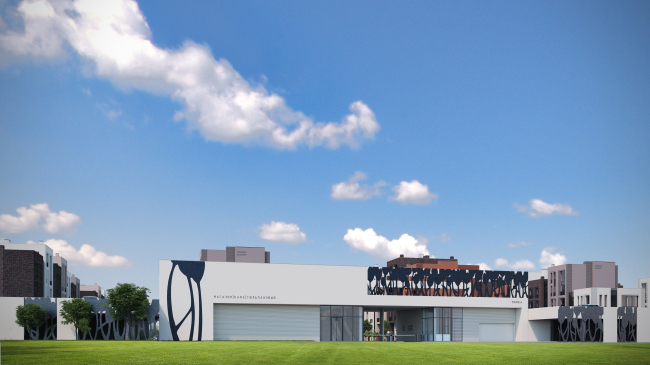 The architects had to work within the economy class sector, which imposed severe limits on the apartment layouts. Since the area mainly consists of small apartments and studios, building it up with separated blocks was practically not an option. Compliance with the norms of insolation, however, was easier to achieve by means of linear orientation of the houses. The neighboring private sector constrained the height of the buildings – the new houses were not to be higher than five stories. And so it turned out that UNK project had to arrange an area of five-storey houses – a mission that would horrify any soviet architect. UNK project raised a question of designing a five-storey house that would in the least resemble the traditional “prefab”. First of all the architects decided to divide the parallelepipeds into separate segments. This division soon suggested the idea of comparing the segments to small houses. In this way a ribbon development across the private sector would not look so foreign to the latter. It would soon remind its cousin – the town house, rather than an apartment block. And so the idea of “a house of several similar but not identical sections” lead to the stylistic concept of the whole project that subsequently became its name: “The Dutch Quarter”. “Of course we never tried to replicate some certain Dutch buildings – says Julius Borisov. - We’re talking more of a general impression: the rows of houses and the carefully considered dissimilarity of them create vivid “corridors” of buildings that in a way do remind the housing of Amsterdam canals or, let’s say, Copenhagen”. 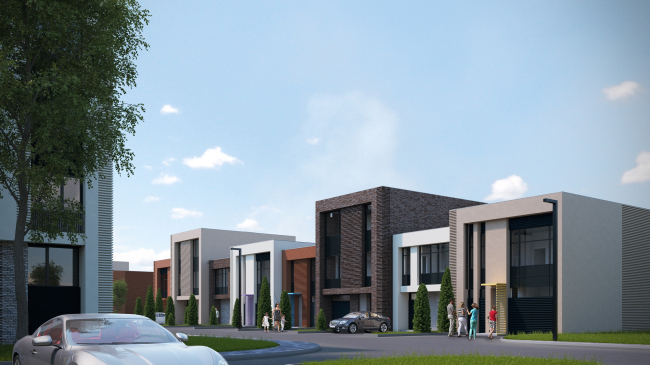 It’s clear, that linear planning offers less variety than gridiron layout, and the architects tried to compensate it in all possible ways. First of all, the passages between the “lines” were divided into two types – streets that allow approaching the houses on a vehicle and completely “car-free” pedestrian boulevards. All in all the architects create six lines organized in three pairs. Each pair gets public areas of two types: external and internal. The streets, though fit for traffic, do not allow parking: all the parking lots are situated along the outer perimeter of the development. The boulevards are furnished with common areas for various social groups: here are playgrounds, sports grounds and places for the pensioners to sit and have a rest. It’s important that the areas can be reached through any of the drives from the street. All the drives are made open-end on purpose, so that the residents wouldn’t have to go roundabout ways. 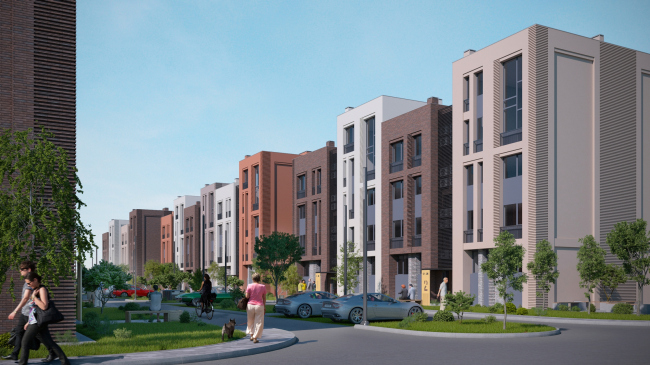 The perspective of each street and boulevard stretches towards the pine wood. The architects also fill the gaps between the lines with green areas – it is a timid try to direct the social activity sideways as well. And as to the social aspect: such commodities as laundry, cafe, shop and kindergarten are all in walking distance from the dwellings. The latter will be situated on the ground floor of one of the houses, whereas the shop, café and the laundry are concentrated around the checkpoint. By the way, the name of the project reflects in the checkpoint as well – only in this case through design, rather than architecture – carved metal tulips serve both as a fence and a familiar logo.  As for the sections themselves, UNK project created 11 types of them to gather different combinations for every line. They vary in finishing materials (stucco, ceramics and several typed of clinker brick), as well as in height, window patterns, the presence or absence of rustication. The houses consisting of four or more sections are finished with dark jalousie fixings: they camouflage the conditioning packs, but more importantly, they make the volumes seem lighter. The true number of stories is also concealed: the floors in the highest houses are blocked in pairs. Thanks to this the buildings really resemble town houses more than apartment blocks. However, such volume arrangement inevitably results in the appearance of a big number of flat ends. In contrast to the glass street facades the flat ends are made solid with rustication to add certain diversity. 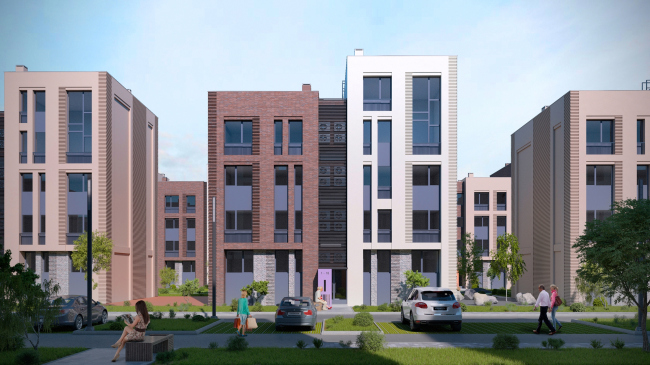 It was in the course of work, when the idea of creating a block of small flats transformed into a multiformat dwelling project. Now there are studios here with area of 30 sq. m., apartments suited for small families and full-fledged three-room apartments. There are even two-level premises on the upper floors that can be with reserve called penthouses. “We suggested the client to diversify the format of the dwelling and he agreed to it readily. It was a chance not only to sell the apartments sooner, but also to create a really colorful social environment” – comments Julius Borisov. UNK project managed to find the optimal proportion of layouts and techniques to create a manifold, balanced area in a fairly small neighborhood. And provided that the project shall in fact be multiplied in the future, the architects hope that the larger scales of the settlement would allow for a deviation from the strict linear structure. 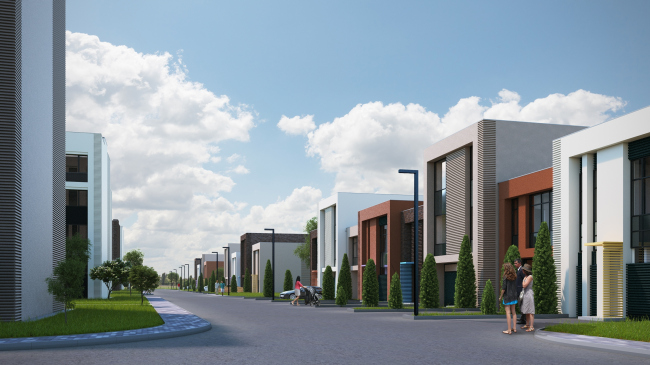 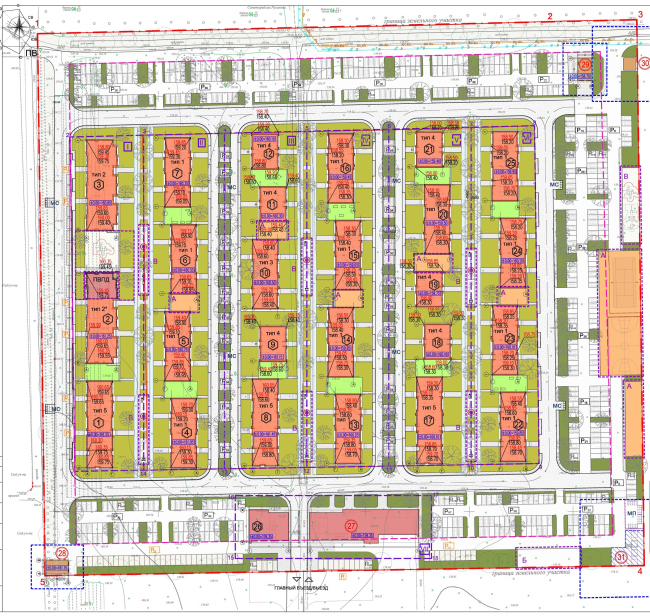 "Dutch Quarter" residential complex in Ivanteevka. Bird's eye view. Project, 2013 © UNK projectNoneNoneNoneNone"Dutch Quarter" residential complex in Ivanteevka. Project, 2013 © UNK projectNoneNone"Dutch Quarter" residential complex in Ivanteevka. Master plan. Project, 2013 © UNK project |
|
